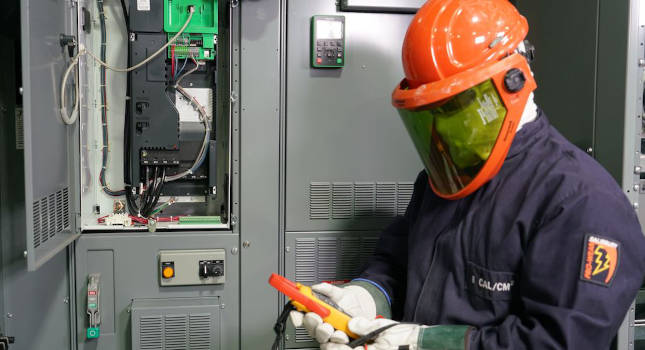NEWS
NFPA Arc Flash Training: Why It’s Essential for Employee Safety

Understanding the dangers posed by arc flash incidents is critical in maintaining a safe work environment, especially in industries where electrical equipment is prevalent. But what is an arc flash?
An arc flash is “the light and heat produced from an electric arc supplied with sufficient electrical energy to cause substantial damage, harm, fire, or injury.” As such, an arc flash accident is to be avoided at all costs.
This article addresses why the NFPA arc flash training is undertaken and the role it plays in protecting electricians against potentially fatal incidents, or you can see more at Benchmark.
The Critical Nature of Arc Flash Hazards
An arc flash can happen at any time and can cause very serious injuries, if not even a loss of property or death. The conditions of the electrical explosions come about when a great discharge of electricity occurs. This may then result in a rapid release of heat, intense light, and also a forceful explosion. The temperatures can reach 35,000°F and can even cause clothing to ignite. It can also give a human skin a third degree burn in the blink of an eye.
Other than direct threat to life and health immediately, there is also other direct financial loss through property damage amongst others in arc flash incidents.
NFPA 70E Arc Flash Training: A Preventative Measure
The NFPA 70E in general terms provides a detailed framework for overall electrical safety, the related assessment strategies for risk, the policy for Personal Protection Equipment (PPE), and safe working practices. In regard to NFPA 70E, an NFPA 70E arc flash training is also provided in order to present you with the required knowledge that is required in identification, assessment, and mitigation of situations created by electricity.
1. Hazard Identification and Risk Assessment
Training would expose you to basic principles of electrical safety detailing how to carry out proper risk assessments and identify any probable arc flash hazards. The knowledge equips you with the ability to identify dangerous conditions even before you even start work, therefore applying control measures that would prevent accidents.
2. PPE Selection and Use
This outlines how selected protective equipment shall be selected based on the hazard risk category behind a specific type of work. You are also educated and taught to use and take care of PPE to ensure the best possible protection during the time you are working near or around electricity.
3. Safe Work Practices
Safe working practices are other types of preventative measurements that can keep at bay arc flash incidents. These are also taught. These come mostly in the forms of training on the de-energizing of electrical equipment before maintenance or repair, procedures of lockout/tagout, proper distance to keep live wires apart, etc. If followed religiously, these practices significantly reduce the possibility of an arc flash accident.
Conclusion
The NFPA 70E arc flash training is offered by professional providers like Benchmark , and is an investment that safeguards people against electrical hazards. Saving yourself and others from injuries resulting from the dismal effects of arc-flash means you have to be proactive. Proactive in ensuring a culture of safety and compliance with NFPA 70E. Remember, safety is not a one-time effort but a continuous commitment to protecting the well-being of every employee.
Kenneth is a proud native of sydney, born and raised there. However, he pursued his education abroad and studied in Australia. Kenneth has worked as a journalist for almost a decade, making valuable contributions to prominent publications such as Yahoo News and The Verge. Currently, he serves as a journalist for The Hear Up, where he focuses on covering climate and science news. You can reach Kenneth at [email protected].










